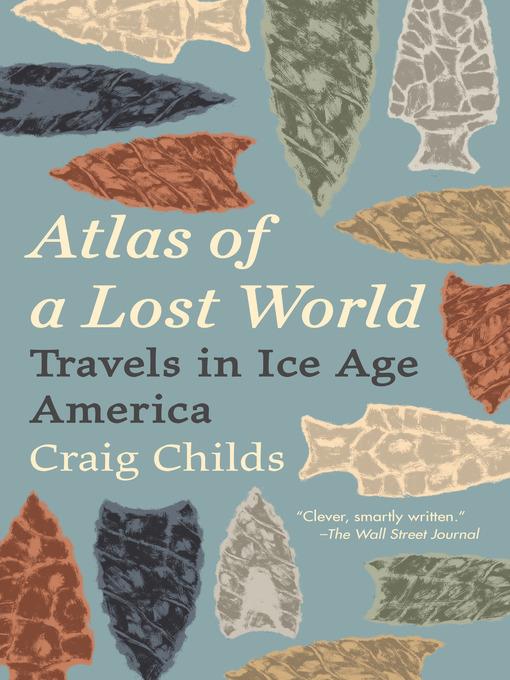
Atlas of a Lost World
Travels in Ice Age America
فرمت کتاب
ebook
تاریخ انتشار
2018
Lexile Score
1180
Reading Level
7-10
ATOS
8.2
Interest Level
9-12(UG)
نویسنده
Craig Childsشابک
9780307908667
کتاب های مرتبط
- اطلاعات
- نقد و بررسی
- دیدگاه کاربران
نقد و بررسی

Starred review from February 19, 2018
In this captivating travelogue, Childs (Apocalyptic Planet) trods the late Ice Age with the first migrants to the Americas—adventurous and canny explorers who traveled amid disappearing glaciers and “a cycle of animals of all sizes from voles and falcons to some of the largest mammals seen in human evolution.” The first human inhabitants of North America likely crossed a land bridge from Siberia to Alaska some 30,000 years ago, and Childs follows their path down the coast of California, across to Texas, and Colorado, and as far as Florida. The migrants not only left their tools and weapons of survival behind, but mysteries, too: “How got to Florida no one knows,” whether they came down the Atlantic coast or “somehow across the Pacific,” he writes. Childs’s walk-in-their-shoes account takes on pinpointing “the world’s most contentious prehistoric problems”—how and where humans came to the Americas. The evidence suggests, however, they “came along multiple routes and at different times, before, during, and after the height of the Ice Age,” he writes. With simple, beautiful sketches by fellow traveler Gilman, Childs’s account will fire the imagination of ordinary readers as well as anthropologists and prehistorians.

March 15, 2018
Scenarios of glacial and postglacial environments in the Americas.Toward the end of the last glaciation, when there was still a land bridge between what was to become Siberia and Alaska, humanoids started to migrate from northeast Asia across the bridge and into the Americas--right? Not so fast. As Childs (Apocalyptic Planet: Field Guide to the Everending Earth, 2012, etc.) points out in this useful and transporting tour d'horizon of the prehistoric Americas, that theory has lost its authority despite its continued usage. In chapters that hopscotch around in time--45,000 years ago, 13,000, 20,000, etc.--and geography (the Bering Sea to Florida), the author brings readers to prehistoric sites, pointing out where artifacts have been found. He presents each site like a diorama, describing what it would have looked like eons ago, what animals would have roamed the land, and what flora would have been available to eat or to fashion as clothing or a boat. "First people," he writes, "wildly outnumbered by animals, would have found themselves tossed and trampled by tusks and hooves or torn to pieces by the scissoring teeth of scimitar cats." Throughout the text, Childs projects a high degree of infectious fascination, pulling readers into his prehistoric scenes. Readers will be impressed by his hardiness as he attempts to experience what an ancient traveler may have experienced. Some of the boats and other conveyances are still used today by far northerners, including the "umiaq, the traditional skin boat...made out of walrus skins stitched together around a wooden frame, eyelets cut through the inch-thick hide and secured with rope." The author backs up his theses with the latest in archaeological research, and he is clearly thrilled when he hits on some new nugget of information.A tight weave of professional findings, anecdotes, site visits, and explanations behind ancient artifacts make this book both engaging and indispensable for those with an interest in prehistory.
COPYRIGHT(2018) Kirkus Reviews, ALL RIGHTS RESERVED.

April 1, 2018
In his latest work, Childs (The Apocalyptic Planet; House of Rain) visits key archaeological sites in North America in an attempt to understand how humans first arrived and expanded across the Americas. Childs explores sites associated with the Bering Land Bridge, which permitted, many experts contend, people from Asia to cross into what is now Alaska. He also investigates how evidence of Solutrean physical culture from prehistoric Europe is littered throughout North America and thus offers an alternate and possibly coinciding theory of an Atlantic crossing. While these theories of migration have existed and been debated for decades, what draws readers in is Childs's approach of actually going to the sites and speaking with researchers. His visit to a modern-day flintknapper in Utah reveals the humanity that went into producing a useful projectile point. Included are imaginative re-creations of the daunting challenges the first arrivals faced, in the form of a frigid and inhospitable climate paired with rapacious megafauna. VERDICT A very engaging read that allows readers a real glimpse into the prehistoric world; Childs ably transforms archaeological theories into relatable concepts.--Brian Renvall, Mesalands Community Coll., Tucumcari, NM
Copyright 2018 Library Journal, LLC Used with permission.

Starred review from March 15, 2018
Childs (Apocalyptic Planet, 2012) takes readers on a scintillating dual journey through the geography of modern and Ice Age America in this survey of some of the lands reached by the first voyagers across the Bering Sea Ice Bridge. With fully half the book set in Alaska, Childs provides a fascinating mash-up of scientific history and present-day travelogue as he journeys across the state's various regions, surveying the land; visiting with scientists and Native scholars; and seeking out the place where anthropology, archaeology, and cultural history meet. While exploring the American West and ultimately embarking on a trip in a north Florida swamp, Childs maintains a self-deprecating humor and a boundless enthusiasm for his subject that makes this narrative an unexpected page-turner. His curiosity is infectious, and the lessons he learns about how Ice Age people lived, what we can learn from them, and who they became resonate with serious staying power. These first people, Tlingit writer Ernestine Hayes tells him, were not becoming Americans, but becoming Tlingit, becoming Navajo, becoming Lakota. Childs has found history deeper than politics, and in rich, evocative prose, he makes it startlingly relevant to readers. A science title with broad and enduring appeal.(Reprinted with permission of Booklist, copyright 2018, American Library Association.)

























دیدگاه کاربران